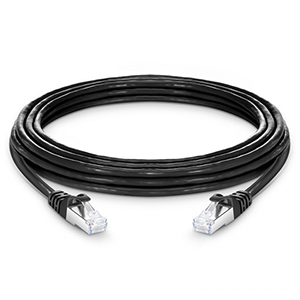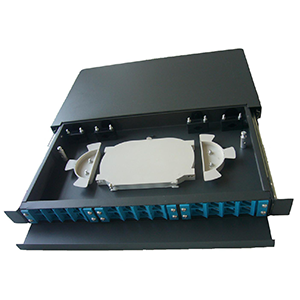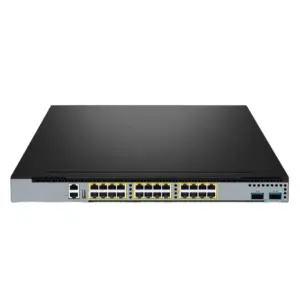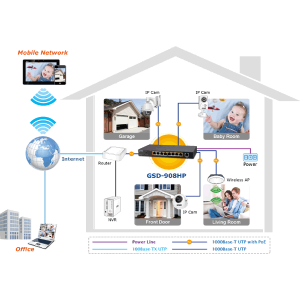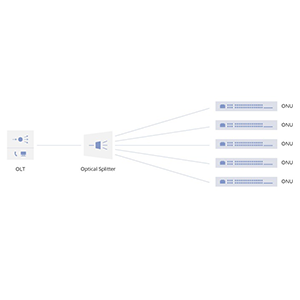Hello everyone! Today I want to share with you a device that plays an important role in high-performance networks – Cat7 network cables. As the key medium for modern network transmission, Cat7 network cable plays an important role in achieving maximum transmission speed and excellent performance. In this article, I will take you to have an in-depth understanding of the maximum transmission speed and performance characteristics of Cat7 network cable, allowing you to better understand its importance and advantages in high-speed data transmission.
Cat7 network cable overview
Cat7 network cable is a high-performance Ethernet cable with the following basic characteristics:
Definition and characteristics:
- Cat7 is the abbreviation of Category 7 and is one of the network cable standards defined by the Telecommunications Engineering Association (TIA) and the International Organization for Standardization (ISO).
- Cat7 cable uses four pairs of twisted wires, each pair adopts a shielded (S/FTP) structure, that is, each wire pair has an independent metal shield and an overall shielding layer to provide better anti-interference performance .
- Cat7 cable has a transmission frequency of up to 600 MHz, supporting high-speed data transmission and network performance requirements.
Advantages and application scenarios:
- High-speed transmission: The transmission frequency and bandwidth of Cat7 cables are much higher than lower category network cables, and are suitable for scenarios requiring high-speed data transmission, such as data centers, connections between servers, and high-speed LANs.
- Anti-interference: Due to the double-shielded structure, Cat7 cable has excellent anti-interference performance, which can effectively reduce the impact of external electromagnetic interference on data transmission, and is suitable for high-interference environments and applications requiring high reliability.
- Future scalability: The transmission performance of Cat7 cable exceeds the needs of most current applications and has high future scalability, which can meet the requirements of future network technology and reduce subsequent upgrade costs.
The importance of high-speed data transmission and anti-interference performance:
- High-speed data transmission: With the continuous growth of data volume and the development of network applications, network cables are required to support higher data transmission rates. The high-frequency bandwidth and low transmission loss characteristics of Cat7 cable ensure reliable high-speed data transmission and meet the needs of large-scale data transmission.
- Anti-interference performance: In industrial environments, high electromagnetic interference environments or dense cable wiring, cables are susceptible to interference, affecting the stability and reliability of data transmission. The shielded structure of Cat7 cable provides better anti-interference ability, reduces interference and bit error rate during data transmission, and ensures accurate data transmission.
In short, Cat7 network cable has the advantages of high-speed transmission, anti-interference and future scalability. It is suitable for network environments that require high performance and reliability, especially in large-scale data transmission, high-interference environments and network stability. In demanding scenarios, its importance cannot be ignored.
Maximum transmission speed of Cat7 network cable
Cat7 network cables can theoretically support transmission speeds up to 10 Gbps (gigabits per second). The following analyzes the specifications and technical standards of Cat7 network cables, and explains the theoretical upper limit of its maximum transmission speed and the factors that affect the maximum transmission speed in practical applications:
Norms and technical standards:
- Cat7 network cable specifications are formulated by the Telecommunications Engineering Association (TIA) and the International Organization for Standardization (ISO), including the TIA-568-C.2-1 and ISO/IEC 11801 standards.
- These standards specify the physical characteristics, electrical characteristics and transmission performance requirements of Cat7 cables to ensure that they can support high-speed data transmission and low transmission loss.
Theoretical upper limit of maximum transmission speed:
- The theoretical maximum transmission speed of Cat7 network cables is 10 Gbps.
- This is because Cat7 cable uses four pairs of twisted wires, and each pair adopts an independent shielding structure, allowing it to transmit data signals at high frequencies and provide lower transmission loss.
Factors affecting maximum transfer speed:
- Cable length: The maximum transmission speed of Cat7 cable is achieved within a specific length range. After exceeding a certain length, signal attenuation will cause the transmission speed to decrease. Generally speaking, Cat7 cable is capable of maintaining transmission speeds of 10 Gbps over a distance of 100 meters.
- Connecting device compatibility: Achieving the maximum transmission speed of Cat7 cables also requires support from the connecting device. For example, devices such as network interface cards, switches, and routers must have 10 Gbps interfaces and processing capabilities to achieve the highest speeds of data transmission.
It should be noted that although Cat7 network cables have a theoretical upper limit of 10 Gbps maximum transmission speed, actual applications may be affected by other factors, such as cable quality, wiring quality, electromagnetic interference, etc. Therefore, in practical applications, in order to ensure the best transmission performance, high-quality Cat7 cables should be selected, with reasonable wiring and connections, and to avoid interference from interference sources.
Performance characteristics of Cat7 network cable
Cat7 network cables offer the following performance characteristics, including excellent interference immunity, high frequency range and bandwidth support, and excellent signal quality and reliability:
Advantages of anti-interference performance:
- Cat7 network cable uses four pairs of twisted wires, and each pair has independent metal shielding and overall shielding layer, forming a double-shielded (S/FTP) structure. This shielding structure effectively prevents external electromagnetic interference from affecting the signal.
- The double-shielded structure of Cat7 cable makes it perform well in high-interference environments, reducing signal attenuation and crosstalk, providing more stable and reliable data transmission.
High frequency range and bandwidth support:
- Cat7 network cables support higher transmission frequencies and bandwidths, with transmission frequencies up to 600 MHz. In contrast, lower category network cables such as Cat5e only support frequencies up to 100 MHz.
- The high frequency range and bandwidth enable Cat7 cables to transmit more data, support high-speed data transmission and large-scale network applications, and meet the modern network environment with high bandwidth requirements.
Signal quality and reliability:
- The double-shielded structure and high-quality wire materials of Cat7 network cable ensure signal quality and integrity. It can reduce signal distortion, reduce transmission loss, and provide more stable signal transmission.
- The high signal quality and reliability of Cat7 cables make it suitable for applications that require high data integrity and reliability, such as large-scale data transmission, video streaming, voice communications, etc.
In summary, Cat7 network cables have significant advantages in terms of anti-interference performance, high frequency range and bandwidth support, as well as signal quality and reliability. These features make it an ideal choice for network environments that require high performance and reliability, especially in high-interference environments, large-scale data transmission, and scenarios that require high network stability.
Cat7 network cable application scenarios
Cat7 network cables are widely used in many fields due to their high performance and anti-interference capabilities. The following are application cases of Cat7 network cables in different fields:
Data Center:
- Data centers are critical to high-speed, reliable network connectivity. Cat7 network cables can meet the needs of data centers for high bandwidth and low latency, supporting fast data transmission and processing.
- In data centers, Cat7 cables can be used for server interconnection, storage area network (SAN), high-performance computing and cloud computing and other applications to ensure the stability and efficiency of the data center network.
Corporate network:
- Enterprise networks need to meet requirements such as large-scale data transmission, video conferencing, and real-time collaboration. Cat7 network cable provides high bandwidth and low transmission loss, and is suitable for cabling and connections within enterprise networks.
- In enterprise networks, Cat7 cables can be used to establish high-speed local area networks (LAN), support large-scale data transmission, remote office and multimedia applications, and provide stable network connections and good user experience.
Audio and video transmission:
- Audio and video transmission is crucial for high-quality signal transmission and delay-free data flow. The high frequency range and bandwidth support of Cat7 network cables can meet the needs of audio and video transmission.
- In the field of audio and video, Cat7 cables are often used for wiring in audio and video production studios, multimedia studios, conference rooms and other places to transmit high-definition video, audio signals and control signals to ensure signal quality and stability.
Cat7 network cables are important in building high-speed and stable network infrastructure:
- High-speed network infrastructure is a core element of the modern information society and is essential for data transmission, communication and collaboration.
- Cat7 network cable, as a high-performance network transmission medium, can provide larger bandwidth and more stable signal transmission, providing key support for building high-speed and reliable network infrastructure.
- When building a high-speed, stable network infrastructure, selecting appropriate cable materials and specifications, such as Cat7 cables, is critical to ensuring network performance, reliability and future scalability.
Summary
Cat7 network cable, as the cornerstone of high-performance networks, demonstrates outstanding performance in various fields with its excellent transmission speed and anti-interference performance. Whether you are in the field of data center, enterprise network or audio and video transmission, Cat7 network cables can achieve high-speed and stable data transmission, helping you build a reliable network infrastructure.
Compared with other categories of network cables, Cat7 network cables have higher bandwidth and wider application range. If you have more questions about Cat7 network cables or need more details, please feel free to contact us. Let us work together to create a high-speed, reliable network environment to meet your various data transmission needs!
Cat7 network cable FAQ
Cat7 network cable is a higher specification cable compared to Cat5 and Cat6, offering higher bandwidth and lower interference for high-speed data transmission and network connections.
The theoretical maximum transmission speed of Cat7 network cable is 10Gbps, although actual speeds may vary depending on network equipment and other factors.
For most home networks, Cat7 network cable may be overkill. Cat6 or even Cat5e cable may already be sufficient for typical home network needs.
Cat7 network cable uses copper conductors to transmit data, while fiber optic cables use light signals. Fiber optic cables typically offer higher bandwidth and longer transmission distances but come at a higher cost.
Cat7 network cable is suitable for network applications that require high bandwidth and low interference, such as data centers, video surveillance systems, and enterprise networks requiring high-speed connections.
Installing Cat7 network cable may require stricter technical requirements, including more precise connections and careful wiring to ensure optimal performance.
Yes, you can use Cat7 network cable with other types of network equipment, but you may be limited by lower-spec cables and unable to achieve the full performance of Cat7 cable.
Cat7 network cable is suitable for shorter-distance network connections and typically not recommended for transmissions exceeding 100 meters. For long-distance transmission, fiber optic may be a better choice.
Cat7 network cable is most common in industries requiring high-speed network connections, such as finance, technology, and healthcare data centers, as well as high-definition video surveillance systems.
Cat7 network cable generally costs more compared to lower-spec network cables. However, considering its performance benefits and potential for future expansion, it may be a reasonable investment for certain applications.

